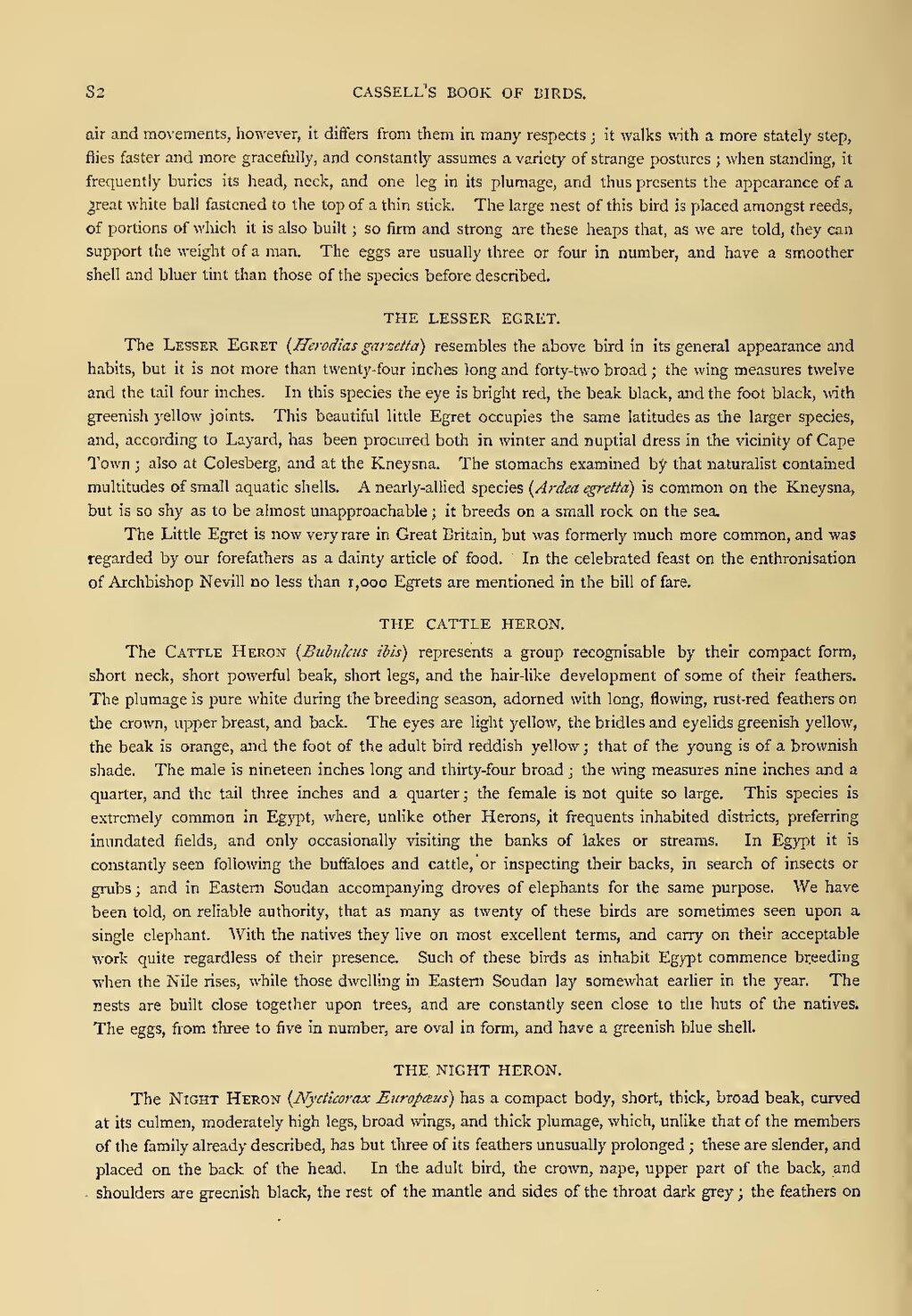air and movements, however, it differs from them in many respects; it walks with a more stately step, flies faster and more gracefully, and constantly assumes a variety of strange postures; when standing, it frequently buries its head, neck, and one leg in its plumage, and thus presents the appearance of a great white ball fastened to the top of a thin stick. The large nest of this bird is placed amongst reeds, of portions of which it is also built; so firm and strong are these heaps that, as we are told, they can support the weight of a man. The eggs are usually three or four in number, and have a smoother shell and bluer tint than those of the species before described.
THE LESSER EGRET.
The Lesser Egret (Herodias garzetta) resembles the above bird in its general appearance and habits, but it is not more than twenty-four inches long and forty-two broad; the wing measures twelve and the tail four inches. In this species the eye is bright red, the beak black, and the foot black, with greenish yellow joints. This beautiful little Egret occupies the same latitudes as the larger species, and, according to Layard, has been procured both in winter and nuptial dress in the vicinity of Cape Town; also at Colesberg, and at the Kneysna. The stomachs examined by that naturalist contained multitudes of small aquatic shells. A nearly-allied species (Ardea egretta) is common on the Kneysna, but is so shy as to be almost unapproachable; it breeds on a small rock on the sea.
The Little Egret is now very rare in Great Britain, but was formerly much more common, and was regarded by our forefathers as a dainty article of food. In the celebrated feast on the enthronisation of Archbishop Nevill no less than 1,000 Egrets are mentioned in the bill of fare.
THE CATTLE HERON.
The Cattle Heron (Bubulcus ibis) represents a group recognisable by their compact form, short neck, short powerful beak, short legs, and the hair-like development of some of their feathers. The plumage is pure white during the breeding season, adorned with long, flowing, rust-red feathers on the crown, upper breast, and back. The eyes are light yellow, the bridles and eyelids greenish yellow, the beak is orange, and the foot of the adult bird reddish yellow; that of the young is of a brownish shade. The male is nineteen inches long and thirty-four broad; the wing measures nine inches and a quarter, and the tail three inches and a quarter; the female is not quite so large. This species is extremely common in Egypt, where, unlike other Herons, it frequents inhabited districts, preferring inundated fields, and only occasionally visiting the banks of lakes or streams. In Egypt it is constantly seen following the buffaloes and cattle, or inspecting their backs, in search of insects or grubs; and in Eastern Soudan accompanying droves of elephants for the same purpose. We have been told, on reliable authority, that as many as twenty of these birds are sometimes seen upon a single elephant. With the natives they live on most excellent terms, and carry on their acceptable work quite regardless of their presence. Such of these birds as inhabit Egypt commence breeding when the Nile rises, while those dwelling in Eastern Soudan lay somewhat earlier in the year. The nests are built close together upon trees, and are constantly seen close to the huts of the natives. The eggs, from three to five in number, are oval in form, and have a greenish blue shell.
THE NIGHT HERON.
The Night Heron (Nycticorax Europæus) has a compact body, short, thick, broad beak, curved at its culmen, moderately high legs, broad wings, and thick plumage, which, unlike that of the members of the family already described, has but three of its feathers unusually prolonged; these are slender, and placed on the back of the head. In the adult bird, the crown, nape, upper part of the back, and shoulders are greenish black, the rest of the mantle and sides of the throat dark grey; the feathers on
